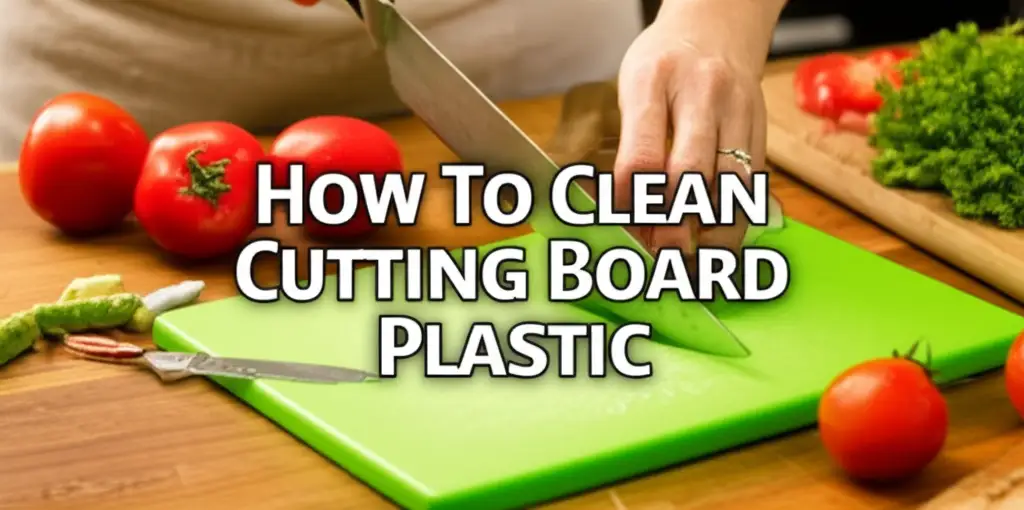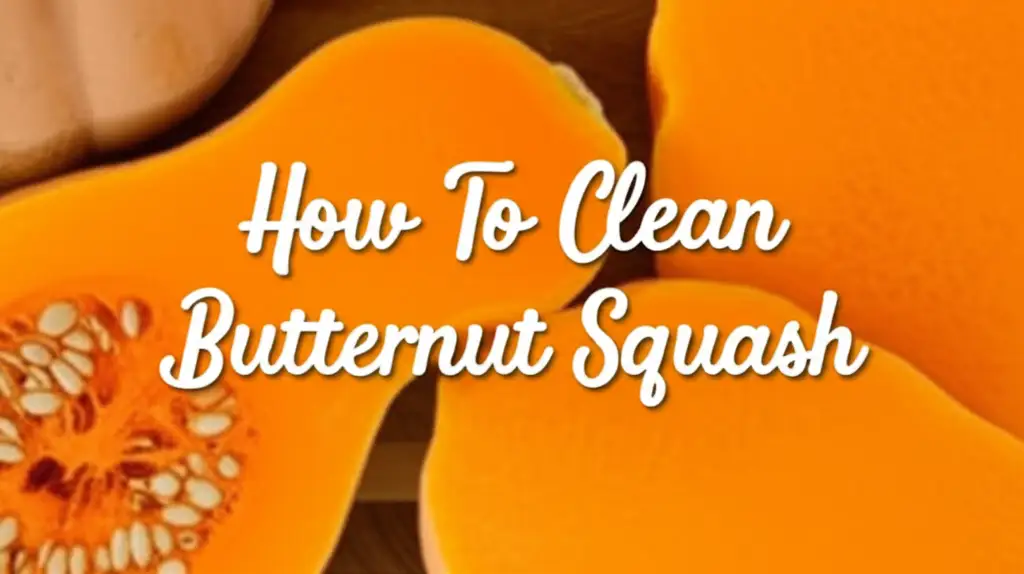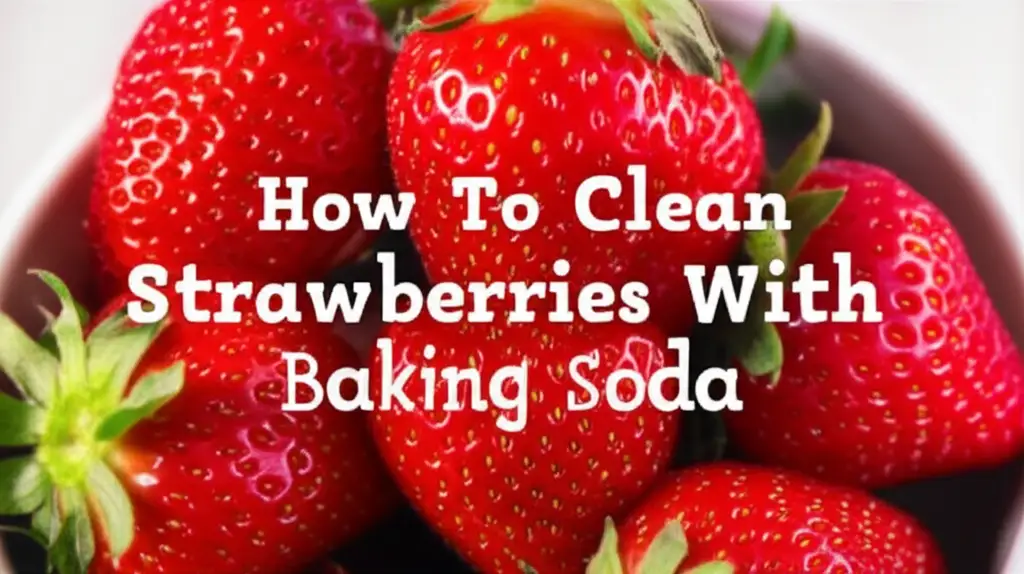· Kitchen Cleaning · 14 min read
How To Clean Cutting Board Plastic

How to Clean Plastic Cutting Boards Effectively
Keeping your kitchen clean is a top priority. A crucial part of this involves properly cleaning your cutting boards. Plastic cutting boards are very popular in many homes. They are durable and often go into the dishwasher. However, they need special care to stay hygienic. Knowing how to clean cutting board plastic ensures safe food preparation. Dirty boards can spread germs. This article will guide you through simple and effective cleaning methods. We will cover daily washing, deep sanitization, and stain removal.
Takeaway
To ensure your plastic cutting board is clean and safe for food:
- Wash it with hot, soapy water after every use, or use a dishwasher.
- Deep clean and sanitize it regularly with bleach solution or hydrogen peroxide.
- Use baking soda, vinegar, or lemon for stubborn stains and odors.
- Replace your board when it shows deep cuts or heavy discoloration.
To clean a plastic cutting board, wash it with hot, soapy water immediately after each use. For deep cleaning and sanitization, you can use a diluted bleach solution, hydrogen peroxide, or a paste of baking soda and water to remove stains and odors, ensuring food safety.
Why Proper Cleaning Matters for Plastic Cutting Boards
Maintaining a clean kitchen starts with clean tools. Your plastic cutting board is one of the most used items. It handles various foods, including raw meat, poultry, and vegetables. These foods can leave behind bacteria. Harmful germs like Salmonella or E. coli can live on dirty surfaces. Proper cleaning stops these germs from spreading. This is crucial for preventing foodborne illnesses.
Plastic boards are often thought of as non-porous. This means they do not absorb liquids easily. However, cuts and grooves appear over time. These small cuts can trap food particles. Bacteria can then hide and grow in these tiny spaces. Regular and thorough cleaning reaches these areas. It removes food residue and kills germs. This practice extends the life of your board. It also keeps your family safe from contamination. Ignoring proper care makes your board a health risk. We want to avoid that entirely.
Essential Supplies for Cleaning Your Plastic Board
You do not need many special items to clean your plastic cutting board. Most supplies are already in your kitchen or pantry. Having them ready makes cleaning easier. This saves you time and effort. Using the right tools helps achieve the best cleaning results.
Here is what you will need:
- Dish Soap: Any standard dish soap works well. It cuts through grease and food residue. I always keep a good bottle next to my sink.
- Hot Water: Hot water helps dissolve grease and grime. It also aids in killing germs. Very hot water is best for sanitization.
- Scrubbing Brush or Sponge: A sturdy brush with stiff bristles is ideal. It helps reach into grooves and lift stuck-on food. A rough-sided sponge also works.
- Bleach (Household Chlorine Bleach): This is a powerful sanitizer. It kills most bacteria and viruses effectively. Always use it diluted.
- White Vinegar: Vinegar is a natural disinfectant and deodorizer. It helps remove mild stains and bad smells. I often use it for a more natural approach.
- Baking Soda: This is a gentle abrasive. It works well for scrubbing away stains. It also absorbs odors.
- Lemon: Lemon halves are great for deodorizing and brightening surfaces. Their acidity helps break down some stains.
Having these items on hand means you are always ready for any cleaning task. You can tackle everyday messes and deeper sanitization needs. These simple supplies make plastic cutting board cleaning effective.
Daily Cleaning: The Basic Steps to Wash Plastic Cutting Boards
Washing your plastic cutting board daily is important. This practice prevents food particles from drying onto the surface. It also removes most bacteria immediately. Daily cleaning is your first line of defense. It keeps your kitchen hygienic for everyday use. Always clean your board right after you finish using it.
Hand Washing Method
Hand washing is a simple and effective way to clean your board. I prefer this method for quick clean-ups. It ensures you address all visible food residue.
- Rinse Thoroughly: First, rinse the board under hot running water. This removes loose food bits.
- Apply Dish Soap: Apply a few drops of dish soap directly to the board.
- Scrub Vigorously: Use a scrubbing brush or a clean sponge. Scrub both sides of the board. Pay extra attention to any cuts or grooves. These areas can trap food particles.
- Rinse Again: Rinse the board completely under hot water. Make sure no soap residue remains.
- Dry Properly: Dry the board with a clean towel. You can also let it air dry. Air drying helps prevent moisture buildup. Moisture can lead to bacterial growth.
Dishwasher Method
Many plastic cutting boards are dishwasher safe. This is a convenient option for daily cleaning. The high heat in a dishwasher helps sanitize the board.
- Scrape Off Food: Scrape any large food pieces from the board first. This prevents clogging your dishwasher drain.
- Place in Dishwasher: Place the board upright in the dishwasher rack. Ensure water can reach all surfaces.
- Run Hot Cycle: Run your dishwasher on a hot wash cycle. The heat and detergent will clean and sanitize the board.
- Check Dryness: Make sure the board is fully dry before storing it. If it is still damp, let it air dry completely.
Both hand washing and dishwasher methods are good for daily use. Choose the one that fits your routine best. Consistent daily cleaning keeps your plastic cutting board ready for safe food preparation.
Deep Cleaning and Sanitizing Plastic Cutting Boards
Daily washing is good, but deeper cleaning is sometimes needed. Over time, bacteria can build up in scratches. This requires a strong sanitizing solution. Deep cleaning also helps remove stubborn odors and invisible germs. I perform a deep clean regularly, especially after cutting raw meats.
Bleach Solution for Sanitization
Bleach is a powerful disinfectant. It kills most germs effectively. Use it carefully and always diluted.
- Prepare Solution: Mix 1 teaspoon of liquid chlorine bleach with 1 quart (about 1 liter) of water. I use a clean spray bottle or a large basin.
- Apply to Board: Pour the solution over the entire surface of the board. Ensure it covers all areas.
- Soak Time: Let the solution sit on the board for at least 5 minutes. This gives the bleach time to work.
- Rinse Thoroughly: Rinse the board very well under hot running water. Make sure no bleach smell remains.
- Dry Completely: Dry the board completely with a clean towel or air dry.
Hydrogen Peroxide Method
Hydrogen peroxide is a gentler alternative to bleach. It also works as a good sanitizer. It is safer to handle.
- Pour Peroxide: Pour 3% hydrogen peroxide directly onto the board.
- Spread Evenly: Use a clean sponge or paper towel to spread it. Cover the whole surface.
- Let Sit: Let the hydrogen peroxide sit for 5-10 minutes. It will bubble slightly as it works.
- Rinse and Dry: Rinse the board thoroughly with water. Then, dry it completely.
Vinegar Soak for Odors and Stains
White vinegar is excellent for natural sanitization and odor removal. It helps break down stubborn stains too. It is a good choice if you prefer non-bleach methods.
- Spray or Soak: Spray undiluted white vinegar generously over the board. For stronger odors, you can soak the board in vinegar. Use a basin filled with enough vinegar to cover the board.
- Let Sit: Let the vinegar sit for 10-15 minutes. For a soak, let it sit for 30 minutes to an hour.
- Rinse Well: Rinse the board with hot water. The vinegar smell will disappear as it dries.
- Dry Completely: Dry the board thoroughly before storing.
Baking Soda Paste for Deep Stains
Baking soda is a mild abrasive. It is perfect for scrubbing away tough stains and absorbing odors. I find it very effective for discolored areas.
- Make a Paste: Mix baking soda with a small amount of water. Create a thick paste.
- Apply to Stains: Spread the paste over the stained areas of the board.
- Scrub Gently: Use a scrubbing brush or sponge to gently scrub the paste into the stains.
- Let Sit: Let the paste sit for 10-15 minutes on very stubborn stains.
- Rinse and Dry: Rinse the board well with hot water. Dry it completely.
Regular deep cleaning helps keep your plastic cutting board hygienic and looking good. It is an important part of kitchen cleanliness.
Removing Stubborn Stains and Odors from Plastic Boards
Plastic cutting boards can develop persistent stains and odors. Tomato sauce, turmeric, or garlic can leave behind discoloration and smells. These issues affect both appearance and hygiene. Luckily, there are simple ways to tackle them. I have found these methods very helpful for keeping my boards fresh.
Lemon and Salt Scrub
This natural method is great for brightening and deodorizing. Lemon’s acidity helps break down stains. Salt acts as a gentle abrasive.
- Sprinkle Salt: Sprinkle a generous amount of coarse salt (like kosher salt) over the board. Focus on stained areas.
- Use Half Lemon: Take half a lemon. Use it to scrub the salt into the board’s surface. Squeeze the lemon as you scrub. This releases its juice.
- Rub and Let Sit: Rub the lemon and salt mixture over the entire board. Continue scrubbing for several minutes. You can also let the mixture sit for 15-20 minutes. This allows the lemon juice to work.
- Rinse and Dry: Rinse the board thoroughly with hot water. Make sure all salt and lemon residue is gone. Dry the board completely. This method also works well for wooden boards. If you want to know more about keeping wooden boards clean, read about how to clean wooden chopping board.
Sun Bleaching (for white boards)
Sunlight is a natural bleaching agent. This method works best for white or light-colored plastic boards. It helps fade yellowing and food stains.
- Wash Board: First, wash the board thoroughly with soap and water. Remove all food particles.
- Place in Sun: Place the wet board directly in strong sunlight. Lay it flat on a clean surface.
- Flip if Needed: Let it sit for several hours. Flip the board over if both sides are stained.
- Check and Rinse: Check the board periodically. Once stains fade, bring it inside. Rinse it off and dry it completely. This is a simple, eco-friendly way to refresh your board.
These techniques help remove stubborn stains and bad odors. Your plastic cutting board will look and smell much cleaner.
Best Practices for Maintaining Your Plastic Cutting Board’s Longevity
Proper care extends the life of your plastic cutting board. It keeps it hygienic and reduces the need for frequent replacements. Investing a little time in maintenance pays off. These practices ensure your board remains a safe surface for food preparation. I always follow these steps to get the most out of my kitchen tools.
Prevent Deep Cuts and Grooves
Deep cuts on your cutting board are problematic. They create hiding spots for bacteria. This makes boards harder to clean.
- Use Proper Knives: Use sharp knives on your board. Dull knives require more force. This can cause deeper cuts.
- Avoid Chopping Bones: Do not chop bones directly on your plastic board. Bones are hard and can score the surface deeply.
- Use Different Boards: Consider having separate boards. Use one for raw meats and another for produce. This also helps prevent cross-contamination. Learn more about cleaning after raw meat: how to clean wood cutting board after raw meat.
Proper Storage
Storing your cutting board correctly prevents moisture buildup. Moisture encourages bacterial growth. It can also cause warping.
- Dry Completely: Always ensure the board is completely dry before storing.
- Store Vertically: Store boards upright in a rack or stand. This allows air circulation on all sides. It also prevents warping.
- Avoid Humid Areas: Do not store boards in damp or humid places. A dry cabinet or pantry is best.
Regular Inspection
Regularly inspect your board for signs of wear. Early detection of issues can prevent larger problems.
- Check for Deep Grooves: Run your fingers over the surface. Feel for deep, irreparable cuts.
- Look for Discoloration: Note any permanent discoloration or cloudiness.
- Assess Odors: Check for persistent odors that do not go away with cleaning.
By following these best practices, you ensure your plastic cutting board stays in good condition. This makes it a safer and more reliable tool in your kitchen.
When to Replace Your Plastic Cutting Board
Even with the best care, plastic cutting boards do not last forever. They eventually show signs of wear and tear. Knowing when to replace them is crucial for food safety. A worn-out board can become a health hazard. I make it a point to check my boards regularly.
Here are the key signs that it is time for a new plastic cutting board:
- Deep Cuts and Grooves: This is the most important sign. Over time, knives leave cuts on the board’s surface. These cuts become deeper grooves. Food particles and bacteria get trapped in these grooves. They become very difficult, if not impossible, to clean properly. Even strong sanitizers may not reach all the hidden germs.
- Heavy Discoloration: While some stains are removable, persistent heavy discoloration is a red flag. If your board remains stained even after deep cleaning, it often means the plastic has absorbed too much. This absorption can signify a breakdown in the plastic’s integrity. It also suggests that germs might have penetrated the surface.
- Foul or Persistent Odors: If your board retains odors, even after washing and deodorizing, it is a sign. Odors indicate bacteria or absorbed food compounds that you cannot remove. This means the board is no longer truly clean.
- Warping or Cracks: A warped board does not sit flat. This makes cutting unsafe. Cracks also provide hiding spots for bacteria. They weaken the board structure.
- Soft Spots or “Fuzziness”: Sometimes, the plastic surface can become soft or develop a fuzzy texture. This happens from extensive use and cleaning. It means the plastic is breaking down. These areas are breeding grounds for bacteria.
Replacing your board when these signs appear is essential. It protects your health and maintains kitchen hygiene. A new board gives you a fresh, clean surface for all your food preparation needs. Do not risk cross-contamination by using an old, worn-out plastic cutting board.
FAQ Section
Can you put plastic cutting boards in the dishwasher?
Yes, most plastic cutting boards are dishwasher safe. The high heat and detergents in a dishwasher effectively clean and sanitize them. Always check your board’s specific care instructions. Make sure to scrape off large food pieces before placing it in the dishwasher.
How do you get deep stains out of plastic cutting boards?
For deep stains, try a baking soda paste. Mix baking soda with a little water to form a thick paste. Apply it to the stained area and scrub with a brush. Let it sit for 10-15 minutes, then rinse thoroughly. Lemon and salt scrub also works for brightening and removing many stains.
Is it better to use wood or plastic cutting boards?
Both wood and plastic cutting boards have pros and cons. Plastic boards are often dishwasher safe and are less porous initially. Wood boards are sometimes preferred by chefs for knife edge preservation. The most important factor is proper cleaning and sanitization for either type.
How often should I clean my plastic cutting board?
You should wash your plastic cutting board with hot, soapy water immediately after every use. For deep cleaning and sanitization, aim for at least once a week, or more often if you frequently cut raw meat or produce. This ensures optimal hygiene and food safety.
What’s the best way to disinfect a plastic cutting board?
The most effective way to disinfect a plastic cutting board is using a diluted bleach solution. Mix 1 teaspoon of liquid chlorine bleach with 1 quart of water. Apply the solution to the board and let it sit for 5 minutes. Rinse thoroughly with hot water afterward. Hydrogen peroxide is another good option.
Conclusion
Keeping your plastic cutting board clean is fundamental for a healthy kitchen. We have covered daily washing, deep cleaning, and removing tough stains. Remember that regular cleaning prevents the spread of harmful bacteria. It also helps your board last longer. By following these simple steps, you ensure safe food preparation every time.
Your plastic cutting board works hard for you. Give it the care it deserves. Make cleaning a routine. A clean board is a safe board. This practice protects your family from foodborne illnesses. Now you have all the knowledge to keep your cutting boards spotless. Embrace these cleaning habits. Enjoy a cleaner, safer cooking experience.
- plastic cutting board cleaning
- sanitize cutting board
- kitchen hygiene
- food safety
- remove stains plastic




